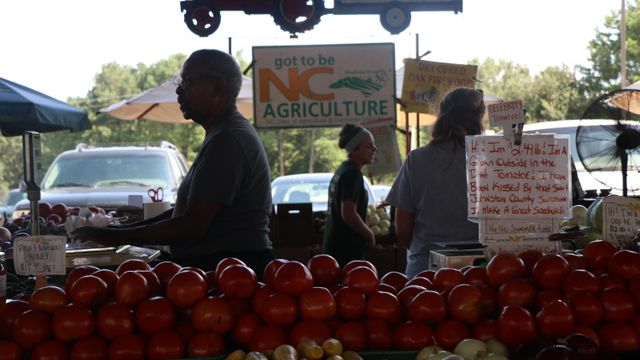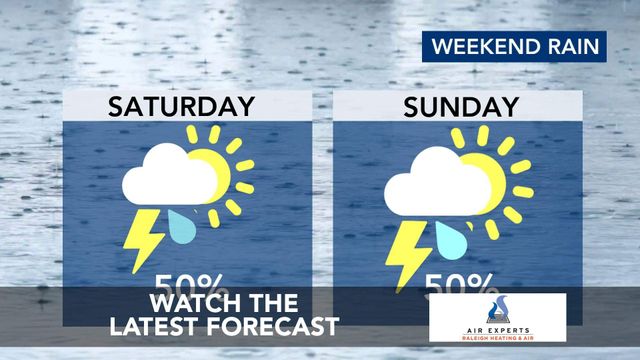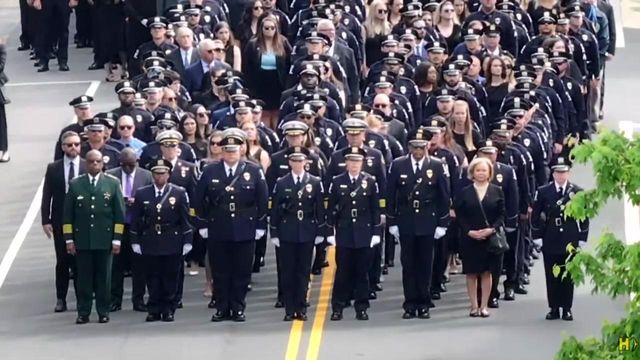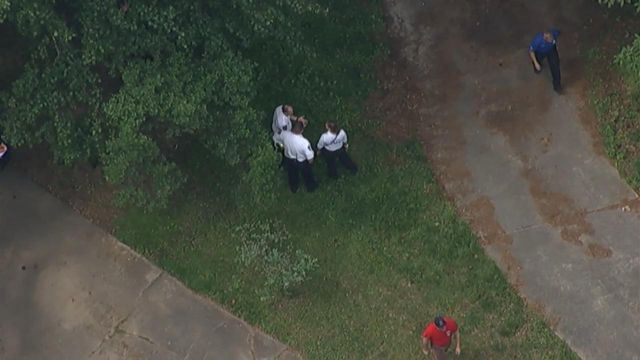Recession coming in 2024? 7 experts weigh in
Despite slowing inflation and a strong jobs report, economic uncertainty remains high.
Many are still asking the question they asked themselves last year: are we headed for a recession, and if so, when will it strike? These are the questions that have been worrying individuals and businesses alike. In an effort to provide clarity amidst the confusion, 5 On Your Side consulted with local and national economics experts to get their take on our economic future.
Their collective opinion is unanimous: a recession looms on the horizon. A recession is generally defined by a fall in gross domestic product in two successive quarters.
Out of the seven economists 5 On Your Side talked to this year, all believe we will likely enter a recession at some point next year, to varying degrees. Two of them told 5 On Your Side that there’s at least a 70% chance.
Last year, 5 On Your Side asked the same question to the same group. At the time, half believed a recession in 2023 was likely, two were uncertain, and two felt it was less likely. Dr. Charles Ibeziako is one of the economists who believed a recession was less likely; he also thought 2022 would end strongly, and he was right.
A year ago, optimism prevailed; half of the experts believed 2023 would see a downturn. However, the current sentiment is markedly different. This time, the St. Augustine’s University professor is less optimistic and predicts a recession in the latter half of 2024. He said with unemployment low, workers can demand higher wages, but wages aren’t the only thing costing businesses more.
“Wages are up, prices are up, costs are up,” Ibeziako said.
Combine those increased costs with global variables like sanctions against China, and Ibeziako told 5 On Your Side that the cost of doing business will skyrocket.
“We may have an intensity in supply shock, meaning our producers in the United States may have shortages of input products,” he said.
A shortage of input products like fuel, materials, buildings, and equipment, on top of high wages, will trigger layoffs, he says.
“That is going to hit our consumer confidence directly,” he said.
A knock-on consumer confidence will likely shrink consumer spending, which makes up nearly 68% of the GDP, a major indicator of economic stability. If consumer spending shrinks, the GDP will shrink.
“Last year, the GDP contracted, but employment was steady. If the GDP contracts next year in the first two quarters and unemployment shifts up, we are likely to see a shallow recession in the third quarter,” he said.
And if you look at it from Ibeziako’s perspective, it’s not all negative.
“As bad as it sounds, it may be an opportunity to buy stocks you could not afford earlier,” he said.
Answers from Angelo Kourkafas, Senior Investment Strategist at Edward Jones:
What are the chances we enter a recession in the next year?
There is a higher-than-average chance of a recession next year (50%) as the Fed rate hikes filter through the economy. While we see a cooling in growth to below trend, we may avoid a traditional recession of consecutive quarters of negative economic growth. Instead, we could see some form of a rolling downturn as parts of the economy stabilize, like manufacturing and housing, while other parts may soften, like service sectors.
In terms of what may drive the slowdown, it will likely be slower consumer spending. Key employment indicators, like job openings, the quits rate, and hours worked, have shown some deterioration, monthly payroll growth has also slowed, and wage gains are moderating. In addition to that, accumulated household savings, the amount of savings we have on top of our income, which topped more than $2 trillion following the pandemic, has been drawn down more recently. Therefore, there is a little less dry powder for consumers to spend.
Do you believe the Federal Reserve is on track to achieve its goal of a soft landing?
The path for a soft landing has widened as inflation has been cut by two-thirds while economic growth has stayed robust. However, the Fed will be careful not to declare victory on inflation prematurely like it did in the 1970s and is unlikely to cut rates anytime soon. Time will tell if the Fed ends up delivering just enough tightening to tame inflation without breaking something. But policy will likely remain restrictive for a while, and therefore some downside risks to growth will persist.
What's your general analysis of how the last year has gone and what is your current outlook for the economy?
The one word that comes to mind to describe what we've seen as it relates to the economy and the markets is resiliency. Despite the headwinds of still high inflation and high borrowing costs, the U.S. consumer has kept the economy out of recession thanks in large part to a tight labor market and accumulated savings. In our view, the decline in inflation provides a reason for optimism, but the coast is not yet clear. As described above a rolling slowdown is our base case for the next 12 months.
Answers from Ken Bell, Aspera Financial:
What are the chances we enter a recession in the next year?
Predicting the timing of a recession is challenging, but I’d put the odds of a recession in the next year at 70% currently. That will change as new information comes in, but today I see economic data generally weakening as Americans have just about blown through the excess savings generated from the COVID pandemic stimulus. At the same time, higher costs are pinching wallets, and the effect of higher interest rates is really starting to be felt. Most Americans are living paycheck-to-paycheck, housing and auto affordability has become a big issue, and student debt repayment is about to begin. In addition, the jobs market is still historically strong, but we’ve seen signs of slack recently. Slowing global growth, a strengthening dollar, and commercial real estate woes add to the headwinds.
The big caveat is that we’re entering an election year, so the Biden administration is highly incentivized to push through as much spending as possible to temporarily support economic activity. In addition, many of the official government statistics that recession calls are based on are woefully flawed, lagging, or subject to significant later revisions. A recession that begins in the next year wouldn’t be officially declared until well after the fact.
Do you believe the Federal Reserve is on track to achieve its goal of a soft landing?
The Federal Reserve has a long and storied history of failure. A soft landing is now being discussed in large part due to years of zero percent interest rates and trillions of dollars of Quantitative Easing that led to massive asset bubbles, excessive debt, and a severely distorted economy.
The Fed is like a drug dealer who shows up for bingo night at a senior center with a tray of cocaine-infused chocolate eclairs. Everyone raves about the thoughtful guest and his tasty treats at the start, but it isn’t long before cash advances are being taken against next month’s social security check to leverage up on bingo cards. Eventually, prescription meds are being snorted off oxygen tanks, lines are forming for bingo dauber tattoos, and wheelchairs are getting upgraded with underbody neon lights and sports seats. At the end of the night, the seniors are broke and small fires are still smoldering as Miranda rights are being read, but everyone is relaxed because the dealer assured everyone that he’d post bail money and tidy up the place soon.
So, no, I don’t have any faith in the Fed managing any aspect of a complex economy. As Jay Powell said himself just a few weeks ago, “As is often the case, we are navigating by the stars under cloudy skies.”
Frankly, a committee of astrologers would be more likely to engineer a soft landing. Nevertheless, if a soft landing should happen to occur, we can all be sure that Powell and the Fed governors will get and take credit for it.
What’s your general analysis of how the last year has gone and what is your current outlook for the economy?
I think of the last year as an inflection year. Many economic indicators reached peak or high levels and have been moderating, including employment, existing home sales, money supply, the Federal Reserve’s balance sheet, inflation, wage growth, gross domestic income, and new orders. We’re seeing increasing signs of strain with bankruptcies ticking up, credit card defaults climbing, slowing global growth, and oil prices again moving higher. In addition, we were reminded of our financial fragility with the regional bank scare earlier this year, and that hasn’t magically disappeared.
Years of easy and cheap money have led to a massive amount of debt, asset bubbles, and a tremendous misallocation of capital. Monetary policy operates with a lag, so the reduction in the Fed’s balance sheet and the rise in interest rates over the past year will increasingly negatively impact economic activity. For example, 30-year mortgage rates have climbed from 3% to over 7% in the last year. Unsurprisingly, we've seen a large drop in housing activity and affordability. My baseline expectation is that we’ll either get a recession in the next year or so or we’ll muddle along with muted, debt-fueled growth a bit longer. As for the Fed, they have a history of maintaining restrictive policy until they break something, and I suspect this time will be no different.
Answers from Mark Steckbeck, Campbell University
What are the chances we enter a recession in the next year?
The chances are relatively high. I don’t want to give a percentage, but I believe it's greater than 50%. Although the economy has shown some positive signs, including a somewhat good jobs report last week, there are continuing signs of weakening.
Although the jobs report was relatively good, it is still slowing and we're likely over the post-pandemic push. Firms are also reducing their workforce, which is causing unemployment to rise.
Inflation is down from its high of 9% (annual rate) in June of 2022, but is still above the Federal Reserve's target rate of 2%, and increased last month to 3.18% from just under 3% in July of this year. I anticipate we’ll see another rate increase in the Fed’s next meeting later this month, likely 25 basis points.
Lastly, the spread between the 10-year Treasury bond minus the 3-month T-bill is still negative, predicting an imminent increase in short-term rates.
Do you believe the Federal Reserve is on track to achieve its goal of a soft landing?
This is still yet to be seen, but I am far more optimistic that any recession we will experience will not be deep, nor should it last longer than a quarter or two (i.e., 3 to 6 months). The real problems were (and continuing today) are the large budget deficits, which drive inflationary pressure, and the Federal Reserve's past policy of keeping rates so low for so long. Had the Fed acted six months to a year earlier than it did, I believe it would have been easier to achieve their objectives of containing inflation. But given the delays in acting, it's going to be more difficult. Still, they've done a pretty good job of lessening the risk of a prolonged recession.
What's your general analysis of how the last year has gone and what is your current outlook for the economy?
Getting inflation down within a year from the 9% rate we experienced in June of last year to just under 3% last month was a good achievement. Remember, we struggled with an 8% average rate of inflation for 11 years during the seventies due to past Federal Reserve policies, so this quick action did a lot to improve conditions that had shown signs of trouble.
First among them is the employment outlook, including last Friday's jobs report. Again, things are slowing, but overall job creation was higher than I had expected.
Real wages, which had been decreasing last year, are recovering now. The real wage is still below its pre-pandemic level, but as nominal wages continue to increase at a rate greater than the rate of inflation, we should see an increase in consumer spending and continued increasing consumer sentiment. But again, as companies reduce their workforce, this is likely to slow nominal wage growth.
Lastly, real GDP increased at an annual rate of 2.1% (annualized) for the second quarter of this year. This was driven in part by increases in business fixed investment, which is a good sign and shows firms are a bit more optimistic about the economy than they were a year ago.
Answers from Forbes Dixon, Wake Tech Professor of Economics and Personal Finance
What are the chances we enter a recession in the next year?
It's a greater than zero percent chance.
Do you believe the Federal Reserve is on track to achieve its goal of a soft landing? What's your general analysis of how the last year has gone and what is your current outlook for the economy?
No. The idea was to reduce banks' liquidity and reduce lending. Mission not accomplished.
While the Fed raised the Federal Funds rate, market rates have not responded in-kind:
- 2023 Q2 Fed Funds Rate: up 4.22% from a year ago.
- 2023 Q2 Bank Prime Loan Rate: up 4.23% from a year ago
- 2023 Q1 Finance Rate on Consumer New Autos 60 Month Loan Rate: up 2.96% from a year ago
- no Q2 available
- 2023 Q2 Market Yield on U.S. Treasury Securities at 10-Year Rate: up .66% from a year ago
- 2023 Q2 30-Year Fixed Rate Mortgage Average Rate: up 1.24% from a year ago
- 2023 Q2 15-Year Fixed Rate Mortgage Average Rate: up 1.42% from a year ago
Why? Banks have historic levels of liquidity, which is what tightening was aimed at lowering. High liquidity and virtually no interest rates on bank deposits means the banks are still lending and the economy is growing (albeit slower), and price inflation is being stickier than the Fed would like.
- Q2 Real estate loans: up 10% from a year ago.
- Q2 Consumer loans: up 8% from a year ago.
- Q2 Commercial and Industrial Loans: up 5.7% from a year ago.
- Q2 Auto loans: down .71% from a year ago
- auto loans seem to have flattened
This is a failure of Quantitative Tightening.
A final note: My main concern is the US National Debt and Unfunded Liabilities. That equals over $226 trillion ($32.8t in national debt, $193.6t in unfunded liabilities). Social Security and Medicare liabilities are cataclysmic time bombs virtually no politician is willing to touch.
Answers from Gerald Cohen, University of North Carolina-Chapel Hill
What are the chances we enter a recession in the next year?
I believe there is a 70% probability of a recession beginning sometime in the next year. My favorite economic indicator – the spread between long and short term Treasuries is flashing red, we are seeing some slowing in the labor market, though it remains healthy (the 187,00 print on Friday for August looks good, but the meaningful downward revisions in the previous two months are worrying). Moreover, leading indicators such as temporary help jobs continue on the decline and we are seeing some weakness in interest sensitive sector, such as housing and autos (though as I noted last year shortages limit some of the pain). At the same time, headline inflation is likely to start rising again because of energy prices, which puts the Fed in a bit of pickle and may lead to even more rate increases.
Do you believe the Federal Reserve is on track to achieve its goal of a soft landing?
Per my comment above, there is a 30% chance the Fed achieves its goal of soft landing. Though I believe if a recession occurs, it will likely be mild because of the health of consumer and business balance sheets.
What's your general analysis of how the last year has gone and what is your current outlook for the economy?
The economy has outperformed my and most everyone else’s expectations. A year ago I was not yet in the recession camp, but that changed in the late Fall/early Winter when I called for a recession late this year/early next. As I noted last year the key factor has been jobs, jobs and jobs! The labor market is the main driver of spending and without a meaningful slowdown/outright decline it is hard to get a recession. I still believe we are headed toward a recession as a result of the impact of inflation, higher interest rates, and stresses in the banking system. But, the impact of these have long and variable lags, which is why it is hard to predict economic outcomes and the timing of those outcomes.
Answers from Michael Walden, North Carolina State University Professor Emeritus
What are the chances we enter a recession in the next year?
45% - down from my 55% a year ago.
Do you believe the Federal Reserve is on track to achieve its goal of a soft landing?
Yes, the data are pointing that way.
What's your general analysis of how the last year has gone and what is your current outlook for the economy?
The last year has been a success in terms of moderating the rate of inflation. Note, this still means average prices are rising; but they are rising at a much slower pace (3% compared to a high of 9% last year). With a more moderate inflation rate, workers are seeing their weekly earnings rise faster than prices.











